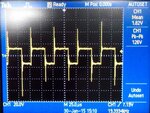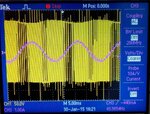chinuhark
Member level 5
I have been curious about proper Power Inverter and VFD PCB design for a while now.
The first PCB I had made lasted about 10 minutes as I was stupid enough to place the IGBTs and Driver ICs on different PCBs.
After that I did research and I now understand the saying 'Layout is critical to reliable operation of power circuits. Please, give it the necessary attention!'
I now understand the basics such as keeping AC and DC loop inductance as small as possible. The driver should be as close as possible to the switches and so on.
I would like some sample layouts so that I get important facts right such as:
1) Whether to use single sided or whether double sided PCB is a must?
2) Do I place the switches in-line or in the way they are shown in the circuit diagram?
These are just a 2 examples of questions in my head right now.
I feel that if someone could give some tips and/or show me a sample layout, I will save a lot of time rather than continuing with trial and error and ending up with something inferior to what is the standard way of doing it.
The first PCB I had made lasted about 10 minutes as I was stupid enough to place the IGBTs and Driver ICs on different PCBs.
After that I did research and I now understand the saying 'Layout is critical to reliable operation of power circuits. Please, give it the necessary attention!'
I now understand the basics such as keeping AC and DC loop inductance as small as possible. The driver should be as close as possible to the switches and so on.
I would like some sample layouts so that I get important facts right such as:
1) Whether to use single sided or whether double sided PCB is a must?
2) Do I place the switches in-line or in the way they are shown in the circuit diagram?
These are just a 2 examples of questions in my head right now.
I feel that if someone could give some tips and/or show me a sample layout, I will save a lot of time rather than continuing with trial and error and ending up with something inferior to what is the standard way of doing it.

